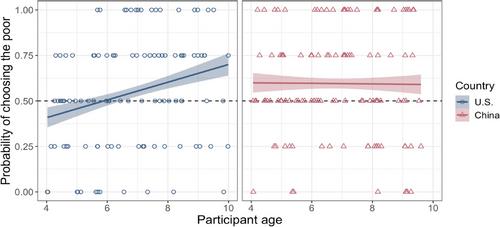The impact of sufferers’ wealth status on pain perceptions: Its development and relation to allocation of healthcare resources
Abstract
Wealth-based disparities in health care wherein the poor receive undertreatment in painful conditions are a prominent issue that requires immediate attention. Research with adults suggests that these disparities are partly rooted in stereotypes associating poor individuals with pain insensitivity. However, whether and how children consider a sufferer's wealth status in their pain perceptions remains unknown. The present work addressed this question by testing 4- to 9-year-olds from the US and China. In Study 1 (N = 108, 56 girls, 79% White), US participants saw rich and poor White children experiencing identical injuries and indicated who they thought felt more pain. Although 4- to 6-year-olds responded at chance, children aged seven and above attributed more pain to the poor than to the rich. Study 2 with a new sample of US children (N = 111, 56 girls, 69% White) extended this effect to judgments of White adults’ pain. Pain judgments also informed children's prosocial behaviors, leading them to provide medical resources to the poor. Studies 3 (N = 118, 59 girls, 100% Asian) and 4 (N = 80, 40 girls, 100% Asian) found that, when evaluating White and Asian people's suffering, Chinese children began to attribute more pain to the poor than to the rich earlier than US children. Thus, unlike US adults, US children and Chinese children recognize the poor's pain from early on. These findings add to our knowledge of group-based beliefs about pain sensitivity and have broad implications on ways to promote equitable health care.
Research Highlights
- Four studies examined whether 4- to 9-year-old children's pain perceptions were influenced by sufferers’ wealth status.
- US children attributed more pain to White individuals of low wealth status than those of high wealth status by age seven.
- Chinese children demonstrated an earlier tendency to attribute more pain to the poor (versus the rich) compared to US children.
- Children's wealth-based pain judgments underlied their tendency to provide healthcare resources to people of low wealth status.


 求助内容:
求助内容: 应助结果提醒方式:
应助结果提醒方式:


